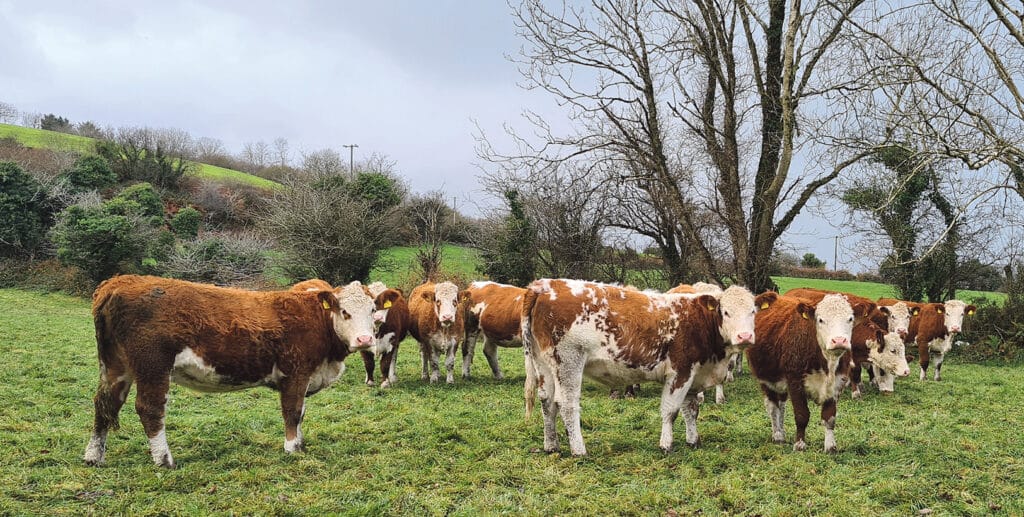
Introduced with much fanfare earlier in the summer, Agri-Climate Rural Environmental Scheme (ACRES) has taken up a lot of head space of late. Having spent a lot of time since its introduction reading about it it’s only in the last few weeks that I’ve been trying to work out how, and if, it will be a runner for the farm. For a brief period, I was considering giving it a miss altogether. The flagship environmental scheme reminds me of that riddle of how to move a fox, chicken and corn across the river but only by taking one at a time. I had hoped to focus on a few particular areas of the farm but if you chose some measures in a field then others are ruled out. So I’ve gone through lots of different variations of what could be done and worked out the pros and cons of each.
As roughly half of the home block is a designated Special Protection Area (SPA), access to the scheme shouldn’t be an issue but finding measures that suit the farm and time limitations are much more of a challenge. Even within the SPA, it looks like less than 15 per cent of that will qualify trying to get a field where there’s ryegrass content of less than 30 per cent is challenging to say the least. That will be less of an issue on more marginal land but the coastal fields around here have largely been in crops or grass for well in excess of a century. Some of the land will be suitable and after that it looks like planting hedgerows will be the main option. Making this choice on paper is one thing but finding the time to get around to the tasks when they move to physical work could be a challenge, but not insurmountable. It’s easier to plant trees from a laptop keyboard than to dig a few thousand holes with a spade to plant them.
I’ve planted a good share of hedges in recent years but mainly inside existing ditches, as this is generally not permitted in agri-environmental schemes. With a number of areas held back for the replacement scheme for GLAS, I thought I was super organised. I should have read the small print earlier though.
The on-farm issue with that is the areas that would have benefitted most from a hedge are in the SPA and are therefore ineligible. Tree planting could be a runner but it might be worth checking out the new forestry programme instead given there’s a longer time frame involved. If I take the tree planting option, it is likely to be in a riparian area near a stream. The balance of the actions I will take centre around laying hedges. I did this successfully about 15 years ago so I’m hoping it works out the same this time around.
By all accounts, farm advisers are under pressure trying to get plans submitted for farmers and the initial deadline was extended by two weeks to December 7. A further extension is unlikely as information from ACRES is required for the new CAP farm payments process that will begin around February 2023. Having been delayed by COVID-19, the new incarnation of CAP will see advisers with an increased work load from now until June next year, as both they and their clients get their heads around the new changes.
ACRES isn’t the only plan I’ve been trying to work out. The ‘what cattle go to where’ winter plan has also been occupying a bit of head space. That’s been much easier in comparison to ACRES and, by December 1, all bar eight cows are housed and the winter routine is slowly bedding in. Their role for the next few weeks is to tidy up grass on the fields across the road. Those fields are primarily used for silage, as moving cows with young calves to them in early in the year is much more trouble than it’s worth. Hopefully they will stay out until close to Christmas.
It’s certainly been an interesting 12 months and as the year draws to a close the most important 20 weeks of 2022 remain ahead. No, it’s not that I’m terrible at maths but from experience I’ve learned that what occurs from January to early May tends to be the most important part of the previous year.
When a farmer saves fodder in summer, they have no idea of how long the winter will be. Yes, you can budget to an extent but you have no idea of what weather will be like from March to May. Over the last decade we’ve had years where late April and early May were below 10 degrees and grass growth was slow. The knock-on effect in those years puts farmers under pressure. After the washout of the last six weeks and the dry summer, hopefully settled weather will prevail for the start of 2023.



